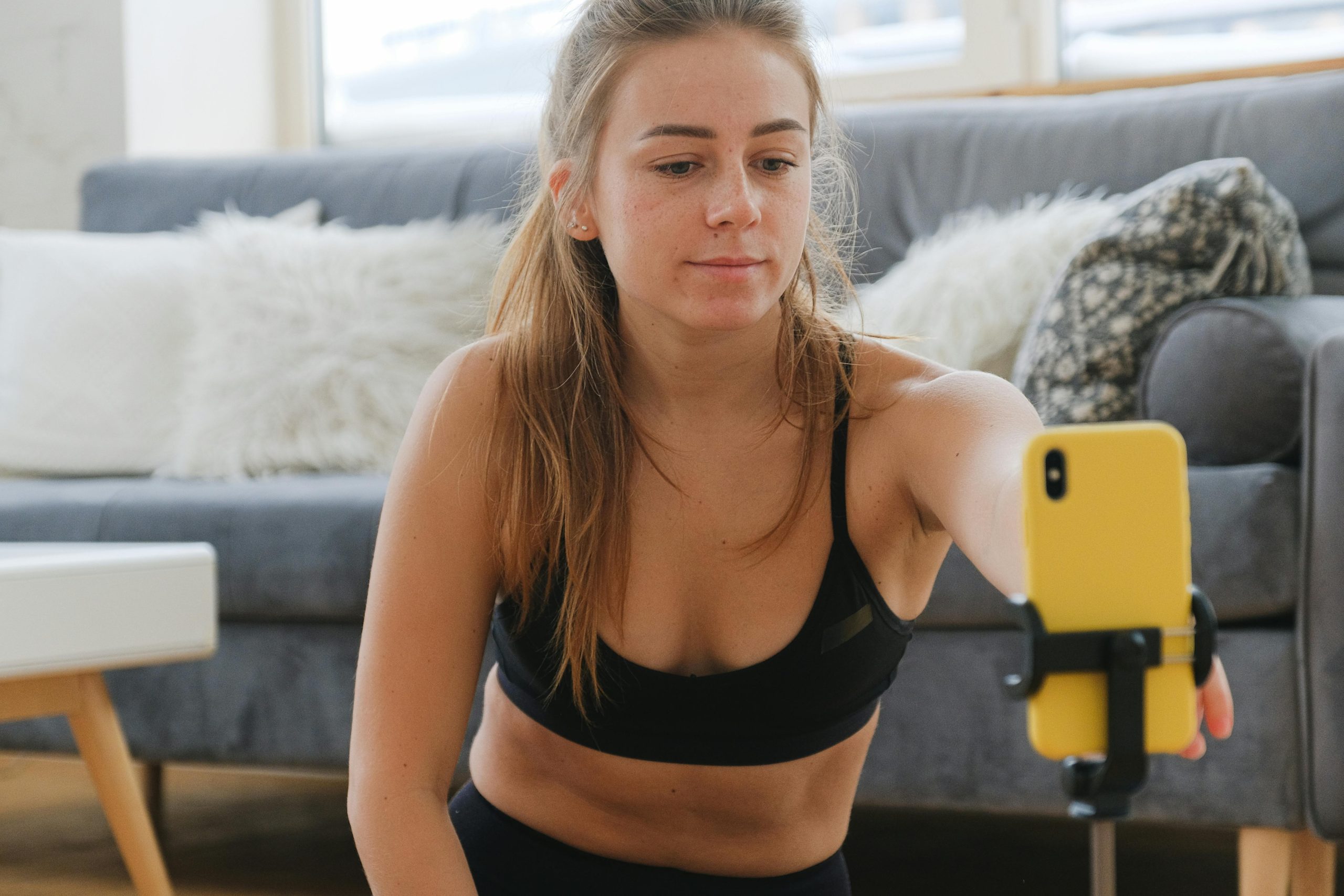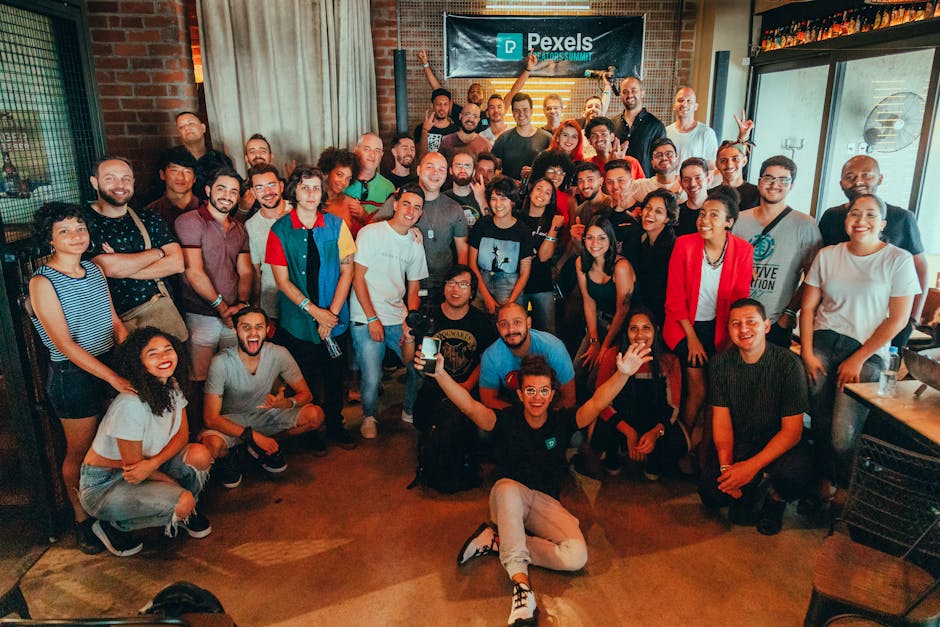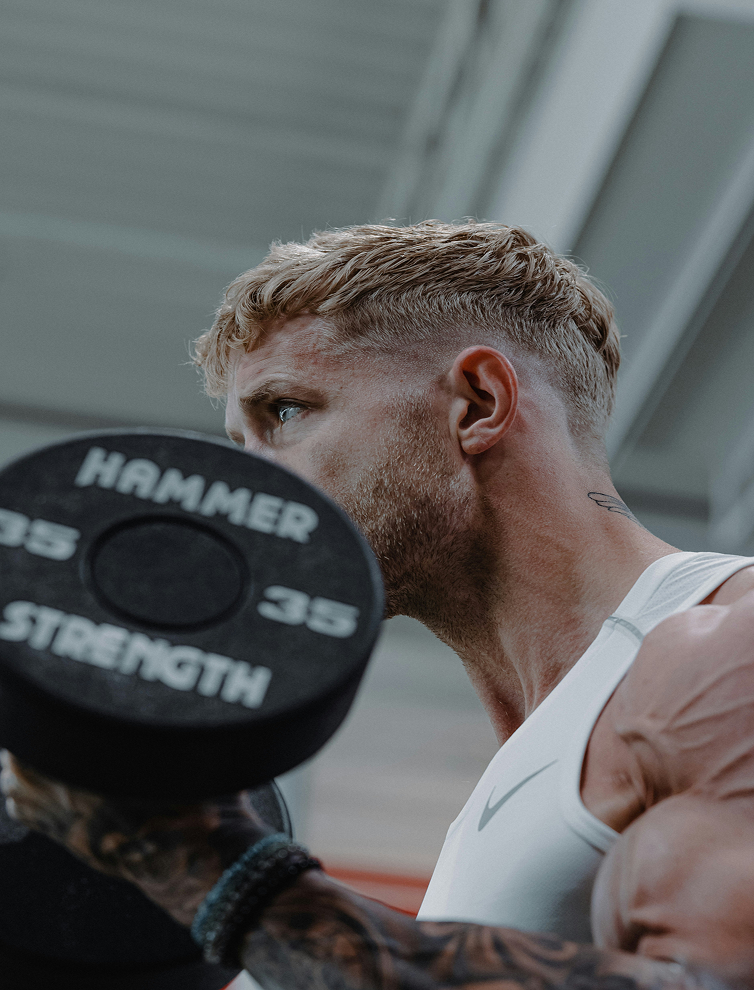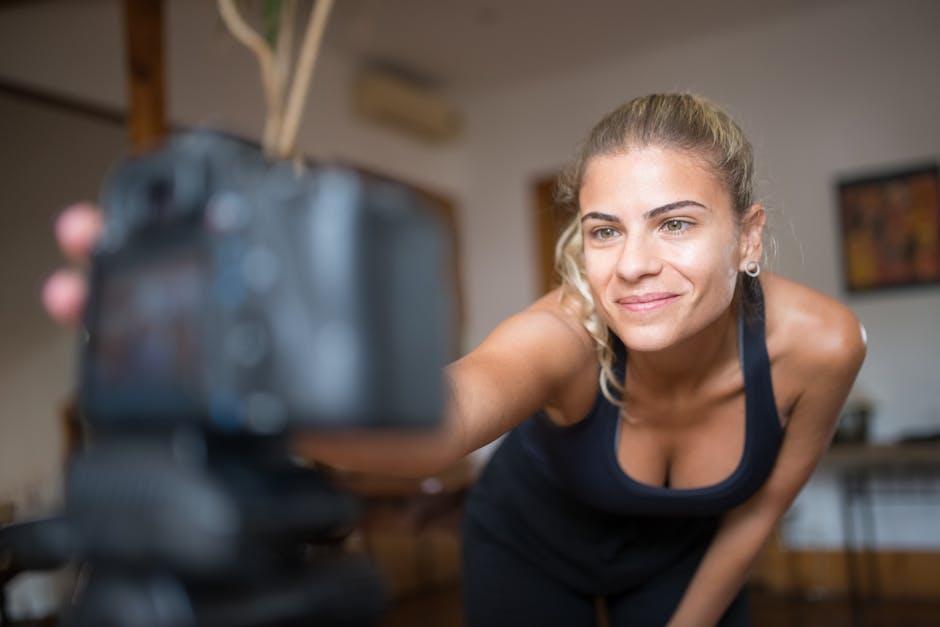The fitness industry is undergoing a significant transformation, driven by digital innovation and the pervasive influence of social media. At the forefront of this evolution are fitness influencers, who have carved out lucrative careers by sharing their expertise, passion, and personal journeys with global audiences. As we look towards 2025, the landscape for monetizing a fitness influence continues to expand, offering diverse and scalable opportunities for those who understand how to strategically leverage their platforms and build authentic connections.
This comprehensive guide delves into the multifaceted monetization strategies available to fitness influencers in 2025. We will explore the current market dynamics, dissect core income streams, analyze emerging trends, and provide actionable insights for building a sustainable and profitable fitness brand. From traditional brand sponsorships to innovative digital product sales and community-driven models, understanding these strategies is paramount for any fitness professional aiming to maximize their earning potential and impact.
The Evolving Market Landscape for Fitness Influencers
The fitness industry is experiencing robust growth, creating a fertile ground for influencers to thrive. Understanding the financial potential and market dynamics is crucial for strategic planning and effective monetization. The global fitness industry revenue is projected to increase to $233.02 billion in 2025, further growing to $248.99 billion in 2026, reflecting a thriving environment for fitness content and influencer marketing.
Current Earning Potential by Influencer Tier
The earning potential for fitness influencers varies significantly based on their follower count, engagement rates, and the diversity of their revenue streams. This tiered structure allows for a clear understanding of what different levels of influence can command in the market.
- Micro-influencers (1K–10K followers): These influencers typically earn approximately $150 to $600 per sponsored post. Their strength lies in higher engagement rates and a more dedicated, niche audience, making them highly attractive to brands seeking authentic connections.
- Mid-tier influencers (10K–100K followers): With a larger reach, mid-tier influencers can command $5,000 to $20,000+ per post, particularly on platforms like Instagram and YouTube. Their monthly incomes typically span $1,000 to $20,000 from a combination of revenue streams.
- Macro and Top-tier influencers (100K+ to Millions): These elite influencers, with millions of followers, can make $10,000 to $100,000+ per month and even several million annually. Their success is often driven by highly diversified business models, including clothing lines, coaching empires, and major supplement endorsements. For instance, figures like Simeon Panda have reportedly earned $17.5 million annually.
Key Market Statistics and Trends
The fitness influencer segment represents a significant portion of the broader influencer economy, indicating its established presence and continued growth. Fitness influencers make up about 15% of all social media influencers, reflecting a substantial niche within the broader influencer economy. This robust market share underscores the importance of specialized content and targeted engagement within the fitness sector.
The industry’s growth is not just in revenue but also in the sophistication of monetization strategies. Brands are increasingly investing in influencer marketing due to its proven effectiveness in reaching targeted audiences and driving conversions. The focus is shifting from mere follower counts to engagement rates and the authenticity of the influencer’s connection with their audience.
| Influencer Tier | Follower Range | Average Per-Post Earnings (Sponsored) | Typical Monthly Income (Multiple Streams) |
|---|---|---|---|
| Micro-influencer | 1K–10K | $150 – $600 | $500 – $2,000 |
| Mid-tier influencer | 10K–100K | $600 – $5,000+ | $1,000 – $20,000 |
| Macro-influencer | 100K–1M | $5,000 – $20,000+ | $10,000 – $50,000+ |
| Top-tier influencer | 1M+ | $10,000 – $100,000+ | $50,000 – $500,000+ |

Core Monetization Strategies and Principles
Successful fitness influencers in 2025 adopt a diversified approach to income generation, moving beyond single revenue streams to build robust, multi-faceted businesses. The core principle revolves around creating value for their audience and strategically leveraging that value across various platforms and offerings.
What are the Foundational Monetization Pillars?
The most effective monetization strategies for fitness influencers are built upon a combination of direct and indirect income streams. These pillars ensure stability and growth, allowing influencers to scale their impact and earnings.
- Sponsored Content and Brand Partnerships: This remains a primary revenue driver. Influencers collaborate with brands (e.g., fitness apparel, supplements, equipment) to create promotional content. The key is authentic alignment, where the influencer genuinely uses and believes in the product, making the promotion feel natural and trustworthy to their audience.
- Affiliate Marketing: Promoting products or services through unique affiliate links or discount codes, earning a commission on every sale generated. This strategy is highly scalable and can be integrated seamlessly into content like workout routines, product reviews, or daily vlogs.
- Online Coaching and Personalized Programs: Leveraging expertise to offer one-on-one coaching, customized workout plans, or nutrition guidance. This provides a high-value service that can command premium pricing and fosters deep client relationships.
- Digital Product Sales: Creating and selling downloadable content such as e-books, workout guides, meal plans, or fitness challenges. These products offer passive income potential once created and can reach a wide audience without direct time investment per sale.
- Subscription Services and Memberships: Offering exclusive content, community access, or advanced training through a recurring subscription model. This builds a stable, predictable income stream and fosters a loyal, engaged community.
Why Diversification is Key for Longevity?
Relying on a single income source, such as sponsored posts, can be precarious. Market shifts, algorithm changes, or brand budget fluctuations can significantly impact earnings. Diversification mitigates these risks, creating a more resilient business model. As experts suggest, “The real revenue comes from building an ecosystem, not chasing one-off sponsorship deals,” emphasizing scalable online coaching, digital products, and subscription-based memberships to nurture trust and offer genuine solutions, according to Awisee.
For example, if a major brand partnership ends, an influencer with strong digital product sales and a thriving subscription community will not face a catastrophic income drop. This multi-pronged approach ensures consistent revenue flow and allows for reinvestment into content creation and audience growth.
How to Align with Brand Values Authentically?
Authenticity is the cornerstone of successful influencer marketing. Audiences are discerning and can quickly spot inauthentic promotions. To ensure genuine alignment:
- Research Thoroughly: Before partnering, deeply research the brand’s mission, values, and product quality. Ensure they resonate with your personal brand and fitness philosophy.
- Test Products Personally: Only promote products you have personally used, tested, and genuinely recommend. Your honest experience builds trust with your audience.
- Integrate Naturally: Weave sponsored content seamlessly into your regular content flow. Avoid abrupt product placements that feel forced or out of place.
- Maintain Transparency: Always disclose sponsored content using clear hashtags like #ad or #sponsored, as mandated by regulatory bodies. Transparency builds credibility.
- Prioritize Long-Term Relationships: Seek out brands interested in ongoing partnerships rather than one-off posts. Long-term collaborations allow for deeper integration and more authentic storytelling.
Leveraging Digital Products and Online Coaching
Digital products and online coaching represent highly scalable and profitable avenues for fitness influencers. These strategies allow influencers to package their expertise and reach a global audience without the geographical limitations of traditional in-person training.
What are the Benefits of Digital Products?
Digital products offer a unique blend of scalability, passive income potential, and direct control over content and pricing. They are a cornerstone of a diversified monetization strategy for fitness influencers.
- Scalability: Once created, a digital product can be sold an infinite number of times without requiring additional time investment per sale. This allows for significant income growth without a linear increase in workload.
- Passive Income Potential: While initial creation requires effort, digital products can generate revenue 24/7, even while the influencer is focused on other activities or resting.
- Direct Control: Influencers maintain full control over the content, pricing, and distribution of their digital products, unlike sponsored content where brand guidelines apply.
- Audience Value: Digital products provide tangible value to the audience, offering specific solutions to their fitness challenges, such as structured workout plans, meal prep guides, or specialized training protocols.
- Brand Building: Selling proprietary digital products strengthens the influencer’s personal brand and positions them as an expert in their niche.
How to Create and Market Effective Digital Products?
Creating successful digital products requires understanding audience needs, effective content creation, and strategic marketing. Here’s a step-by-step approach:
- Identify Audience Needs: Conduct polls, surveys, or analyze comments to understand your audience’s biggest fitness struggles and what solutions they are seeking.
- Develop High-Quality Content: Create comprehensive, easy-to-understand, and actionable content. This could be a detailed e-book on nutrition, a video series on home workouts, or a downloadable PDF of stretching routines.
- Choose the Right Format: Consider various formats like PDFs, video courses, audio guides, or interactive spreadsheets, depending on the content and audience preference.
- Set Competitive Pricing: Research similar products in the market. Price your product based on its perceived value, your expertise, and your target audience’s budget.
- Utilize Marketing Channels: Promote your digital products across all your social media platforms, email lists, and potentially through paid advertising. Highlight the benefits and transformations your product offers.
Online Coaching: From One-to-One to Group Programs
Online coaching allows fitness influencers to provide personalized guidance, fostering deeper connections and delivering more impactful results for clients. This can range from highly individualized programs to scalable group coaching models.
- Personalized One-on-One Coaching: This offers the highest level of customization and support, often involving regular check-ins, tailored plans, and direct feedback. It commands premium pricing due to the individualized attention.
- Small Group Coaching: A hybrid model where a coach works with a small group of clients (e.g., 5-10) who share similar goals. This allows for some personalization while being more time-efficient than one-on-one.
- Large Group/Challenge-Based Coaching: Often structured around specific fitness challenges (e.g., 30-day weight loss challenge). Participants follow a common program with general guidance, fostering a sense of community. This is highly scalable.
- Hybrid Models: Combining aspects of all three, such as offering a core digital product (e.g., a workout plan) with an optional add-on for personalized coaching sessions.
Companies like Hevy Coach provide personal trainer software designed for fitness influencers to professionally manage clients and monetize coaching online, exemplifying tech-enabled coaching scalability. This platform offers a 30-day free trial, making it accessible for influencers to explore professional client management tools.

Mastering Brand Partnerships and Affiliate Marketing
Brand partnerships and affiliate marketing remain cornerstones of fitness influencer monetization. Success in these areas hinges on strategic selection, transparent communication, and a deep understanding of audience needs.
What are the Types of Brand Partnerships?
Brand partnerships can take various forms, each offering different benefits and requiring distinct approaches. Understanding these types helps influencers diversify their collaboration portfolio.
- Sponsored Posts: The most common form, where influencers create content (e.g., Instagram posts, Reels, YouTube videos) featuring a brand’s product or service in exchange for a fee. Payment is often per post or campaign.
- Long-Term Brand Ambassadorships: Influencers become ongoing representatives for a brand, promoting their products consistently over an extended period (e.g., 6-12 months). This often involves a retainer fee and can lead to deeper integration.
- Product Gifting/Barter: Brands send free products in exchange for content, without monetary compensation. While not directly monetized, this can be valuable for building a portfolio, gaining access to new products, or for micro-influencers starting out.
- Co-Created Products: Influencers collaborate with brands to develop and launch new products (e.g., a signature supplement flavor, a fitness apparel line). This can involve profit-sharing or significant upfront fees.
- Event Appearances/Speaking Engagements: Brands pay influencers to attend or speak at events, product launches, or trade shows, leveraging their presence and influence.
How to Negotiate and Structure Deals?
Effective negotiation is crucial for maximizing income from brand partnerships. Influencers should understand their value and be prepared to articulate it.
- Know Your Worth: Research industry rates for influencers of your size and engagement level. Tools like Influencer Marketing Hub’s calculator can provide estimates.
- Prepare a Media Kit: Create a professional document showcasing your audience demographics, engagement rates, past successful campaigns, and content examples.
- Define Deliverables Clearly: Specify the number of posts, stories, videos, usage rights, duration of content, and any other requirements in a written agreement.
- Negotiate Usage Rights: Brands often want to reuse your content. Negotiate separate fees for extended usage rights (e.g., for their website, paid ads).
- Payment Terms: Agree on clear payment schedules (e.g., 50% upfront, 50% upon completion).
- Review Contracts Carefully: If unsure, seek legal advice. Ensure all terms, including exclusivity clauses and termination conditions, are understood.
As experts state, “Sponsorship deals are a cornerstone of influencer income” when brands align authentically with an influencer’s values and audience, creating engaging content that resonates, according to FitBudd. This underscores the importance of strategic alignment over simply chasing any available deal.
Affiliate Marketing Best Practices
Affiliate marketing is a powerful, scalable revenue stream, but it requires strategic implementation to maintain audience trust.
- Select Relevant Products: Only promote products or services that genuinely align with your niche and that you would personally use. Irrelevant promotions erode trust.
- Provide Value-Driven Content: Instead of just dropping a link, create content that explains the benefits of the product, how it solves a problem, or how it fits into your fitness routine. This could be a review, a tutorial, or a “day in the life” video.
- Transparency is Key: Always disclose that you are using an affiliate link, as required by regulations. A simple “This post contains affiliate links” or “I may earn a commission if you purchase through this link” suffices.
- Track Performance: Monitor which affiliate links perform best. This data helps you refine your strategy and focus on products that resonate most with your audience.
- Diversify Affiliate Partners: Don’t put all your eggs in one basket. Work with multiple affiliate programs to reduce reliance on a single source and offer a wider range of products.

Building Community and Subscription Models
Beyond transactional monetization, building a strong community and offering subscription-based services fosters loyalty, provides stable recurring revenue, and creates a deeper connection with your audience. This approach transforms followers into dedicated members.
Why Community is a Monetization Asset?
A highly engaged community is not just a vanity metric; it’s a powerful asset that drives long-term monetization and brand advocacy. It shifts the dynamic from a one-way broadcast to a two-way conversation.
- Increased Engagement: A strong community leads to higher likes, comments, shares, and saves, boosting content visibility and organic reach.
- Direct Feedback Loop: Members provide invaluable feedback on content, product ideas, and challenges, helping influencers create offerings that truly meet needs.
- Higher Conversion Rates: Community members, having built trust and rapport, are more likely to purchase digital products, coaching services, or support sponsored content.
- Reduced Churn: For subscription models, a sense of belonging and shared purpose within a community significantly reduces member churn.
- Word-of-Mouth Marketing: Loyal community members become advocates, spreading awareness and attracting new followers and potential customers.
Implementing Tiered Subscription Services
Subscription services offer a predictable and recurring revenue stream, providing exclusive value to dedicated followers. Tiered models allow for different levels of access and pricing, catering to a broader audience.
- Define Value Propositions for Each Tier:
- Basic Tier (e.g., $5-10/month): Access to exclusive weekly workouts, behind-the-scenes content, early access to new videos.
- Mid-Tier (e.g., $20-30/month): All basic tier benefits plus monthly Q&A sessions, access to a private community forum (e.g., Discord, Facebook Group), and downloadable meal prep guides.
- Premium Tier (e.g., $50+/month): All previous benefits plus personalized monthly check-ins, access to exclusive masterclasses, or priority access to new program launches.
- Choose a Platform: Utilize platforms like Patreon, YouTube Memberships, or dedicated membership site builders (e.g., Kajabi, Teachable, or specialized platforms like The Spott, which supports fitness influencers in creating subscription services).
- Consistent Value Delivery: Regularly provide fresh, high-quality content and engagement opportunities to justify the recurring fee and keep members engaged.
- Promote Exclusivity: Highlight what makes the subscription valuable and exclusive, creating a sense of FOMO (fear of missing out) for non-members.
- Gather Testimonials: Showcase success stories and positive feedback from your subscribers to attract new members.
Fitness Challenges and Engagement Campaigns
Fitness challenges are powerful tools for engagement, community building, and direct monetization. They leverage a shared goal to motivate participants and create a sense of collective achievement.
- Structure and Duration: Typically 7, 14, or 30-day challenges focused on specific goals (e.g., “30-Day Abs Challenge,” “2-Week Healthy Eating Reset”).
- Content Delivery: Provide daily workouts, meal plans, educational content, and motivational messages, often delivered via email, a private app, or a dedicated Facebook group.
- Monetization Models:
- Paid Challenges: Participants pay a one-time fee to join, receiving exclusive content and support.
- Free Challenges with Upsells: Offer a free challenge to build an email list, then upsell participants to premium coaching, digital products, or subscription memberships.
- Sponsored Challenges: Partner with a brand to create a challenge around their products (e.g., a “Protein Powder Challenge” with a supplement brand).
- Community Aspect: Encourage participants to share their progress, support each other, and engage with the influencer. This builds a strong sense of community.
- Success Metrics: Track participation rates, completion rates, and post-challenge conversions to measure effectiveness. 78% of fitness brands use such challenges in influencer marketing to boost engagement and sales.
Optimizing Platform-Specific Monetization Features
Each major social media platform offers unique built-in monetization tools that fitness influencers can leverage to diversify their income. Understanding and optimizing these features is crucial for maximizing earnings directly from content creation.
Instagram’s Monetization Ecosystem
Instagram, with its visual-first approach, provides multiple avenues for fitness influencers to earn directly from their content and audience interactions.
- Instagram Shopping: Influencers can tag products from brands they partner with or their own merchandise directly in posts and Stories, allowing followers to purchase seamlessly within the app. This is ideal for fitness apparel, equipment, and supplements.
- Badges in Live: During Instagram Live sessions, viewers can purchase “Badges” to show support for creators. This is a direct way for engaged followers to contribute financially.
- Affiliate Tools: Instagram is continually rolling out new affiliate features that allow creators to earn commissions directly from product recommendations within the app.
- Reels Play Bonus Program: While often invite-only and subject to change, programs like the Reels Play bonus pay creators based on the performance of their short-form video content.
- Branded Content Ads: Brands can promote influencer content as ads, extending its reach and often leading to higher compensation for the influencer.
YouTube’s Diverse Income Streams
YouTube offers a robust monetization framework, primarily through advertising revenue, but also through direct audience support and product integrations. YouTube shares approximately 55% of ad revenue with creators, making it a significant passive income source for channels with substantial viewership.
- YouTube Partner Program (AdSense): Once eligible, creators can earn revenue from ads displayed on their videos. This requires meeting specific criteria (e.g., 1,000 subscribers, 4,000 watch hours in the past year).
- Channel Memberships: Similar to Patreon, viewers can pay a monthly recurring fee for exclusive perks like custom badges, emojis, and members-only content.
- Super Chat & Super Stickers: During live streams and Premieres, viewers can pay to have their messages highlighted in the chat or send animated stickers.
- Merchandise Shelf: Eligible creators can display and sell their official branded merchandise directly below their videos.
- YouTube Shopping: Creators can integrate products from their own stores or affiliate partners directly into their videos, allowing viewers to browse and purchase without leaving YouTube.
Leveraging TikTok and Other Emerging Platforms
While newer to monetization, platforms like TikTok are rapidly introducing features that allow creators to earn directly from their content and audience.
- TikTok Creator Fund: Pays creators based on video views and engagement, though payment rates can vary.
- LIVE Gifting: Viewers can purchase virtual “Coins” and send them as “Gifts” during live streams, which can be converted into real money.
- Creator Marketplace: A platform connecting brands with TikTok creators for sponsored content opportunities.
- TikTok Shop: An e-commerce feature allowing creators to sell products directly within the app, similar to Instagram Shopping.
Fitness influencers should continuously monitor these platforms for new monetization features and adapt their content strategy to leverage them effectively. Early adoption of new features can provide a competitive advantage.

The Power of Niche Specialization and Authenticity
In an increasingly crowded influencer market, niche specialization and unwavering authenticity are no longer optional; they are critical for standing out, attracting the right audience, and commanding premium monetization opportunities. A focused niche allows for deeper engagement and more targeted brand partnerships.
Why is Niche Specialization Crucial?
Defining a clear niche helps fitness influencers attract a highly engaged and relevant audience, which is more valuable to brands and more likely to convert into paying customers for products and services.
- Attracts a Dedicated Audience: Instead of broadly appealing to “everyone interested in fitness,” a niche like “postnatal yoga for new moms” or “HIIT for busy professionals” attracts individuals with specific needs and interests.
- Higher Engagement Rates: Niche audiences are typically more engaged because the content directly addresses their specific challenges and goals. Higher engagement translates to better performance for sponsored content and stronger community bonds.
- Easier Brand Alignment: Brands seeking to reach a very specific demographic will actively seek out niche influencers. This leads to more relevant and authentic partnerships.
- Positions You as an Expert: Specializing in a niche allows you to become a go-to authority in that specific area, enhancing your credibility and perceived value.
- Reduces Competition: While the general fitness influencer space is saturated, specific niches often have less competition, making it easier to gain visibility and grow.
Whether postnatal yoga, HIIT, CrossFit, or wellness moms, niche targeting helps brands and audiences identify with you authentically, according to Exercise.com. This strategic focus is a powerful differentiator.
How to Define and Cultivate Your Niche?
Defining your niche involves a combination of self-reflection, market research, and audience analysis. Cultivating it requires consistent, targeted content creation.
- Identify Your Passion and Expertise: What specific area of fitness are you most knowledgeable and passionate about? What unique experiences or perspectives do you bring?
- Research Audience Needs: Are there specific problems within your area of passion that people are actively seeking solutions for? Use keyword research, social listening, and audience polls.
- Analyze the Competition: Who else is in this niche? What are they doing well, and where are the gaps you can fill?
- Test Content Ideas: Experiment with different types of content within your potential niche to see what resonates most with your audience.
- Refine and Specialize: Don’t be afraid to narrow down your niche further if it leads to a more engaged and dedicated audience.
The Imperative of Authenticity
Authenticity is the bedrock of trust between an influencer and their audience. Without it, monetization efforts will be short-lived and ineffective. It’s about being genuine, transparent, and consistent in your messaging and actions.
- Be Yourself: Share your true personality, struggles, and triumphs. Audiences connect with real people, not curated perfection.
- Show Vulnerability: Don’t shy away from sharing challenges or setbacks. This makes you relatable and human.
- Practice What You Preach: Your lifestyle and fitness journey should align with the advice and products you promote. Inconsistency erodes credibility.
- Engage Genuinely: Respond to comments, answer questions, and participate in discussions. Show your audience you care about their journey.
- Transparency in Partnerships: Always disclose sponsored content and affiliate links. Honesty builds long-term trust.
Brands and influencers thrive when content feels personal and tied to audience fitness journeys, not just product placement, as highlighted by Awisee. This emphasizes the critical role of storytelling and genuine collaboration in building a sustainable and profitable fitness brand.
Advanced Monetization Tactics and Diversification
As fitness influencers grow their audience and brand, they can explore more advanced and often higher-ticket monetization strategies that leverage their established credibility and reach. These tactics move beyond traditional influencer activities into full-fledged business ventures.
Launching Your Own Product Line
Creating and selling your own physical products, such as fitness apparel, supplements, or equipment, can be a highly lucrative venture, offering significant profit margins and complete brand control.
- Apparel: Design and sell branded workout gear (leggings, tops, hoodies). This builds brand identity and offers a tangible product for loyal fans.
- Supplements: Develop your own line of protein powders, pre-workouts, or vitamins, often in partnership with a reputable manufacturer. This requires careful formulation and regulatory compliance.
- Equipment: Offer branded resistance bands, jump ropes, or small home gym accessories. These are often easier to produce and ship than large equipment.
- Meal Prep/Nutrition Products: Partner with food companies to create branded healthy snacks, meal kits, or protein bars.
This strategy requires significant upfront investment in product development, manufacturing, inventory, and logistics, but the potential returns are substantial. Top-tier influencers often leverage this, with some earning millions annually from such ventures, like Simeon Panda’s reported $17.5 million annually, largely from diversified business models including product lines.
Hosting Workshops, Retreats, and Live Events
Bringing your online community into the real world through live events creates unique, high-value experiences that can generate significant revenue and deepen audience connection.
- Local Workshops: Host in-person workout sessions, nutrition seminars, or Q&A events in your local area. These can be ticketed events.
- Fitness Retreats: Organize multi-day retreats in attractive locations, combining workouts, healthy eating, wellness activities, and community building. These are high-ticket offerings.
- Online Webinars/Masterclasses: For broader reach, host paid online workshops focusing on specific topics (e.g., “Mastering the Deadlift,” “Building a Sustainable Diet”).
- Guest Speaking Engagements: Leverage your influence to get paid to speak at fitness conferences, corporate wellness events, or industry summits.
Monetizing Through Books and Media Deals
For influencers with a strong narrative or unique methodology, publishing books or securing media deals can elevate their status and open new revenue streams.
- Fitness Books: Write and publish books on your training philosophy, nutrition advice, or personal fitness journey. This can be self-published or through a traditional publisher.
- Cookbooks: If nutrition is a key part of your brand, a cookbook featuring healthy recipes can be a popular product.
- Podcast Monetization: If you have a podcast, monetize through sponsorships, listener donations, or premium content.
- TV/Film Opportunities: For highly visible influencers, opportunities for reality TV, fitness shows, or documentaries can arise, offering significant exposure and income.
Investing in Other Businesses or Startups
For established influencers with substantial capital, investing in or co-founding fitness-related startups or businesses can be a strategic move, leveraging their influence for equity or profit-sharing.
- Fitness Tech Startups: Invest in apps, wearables, or online platforms that align with your vision.
- Gyms/Studios: Co-own or invest in physical fitness establishments.
- Health Food Companies: Support or invest in brands producing healthy food or beverage products.
This requires careful due diligence and a strong understanding of business operations, but it offers the potential for long-term wealth creation beyond direct influencer activities.

Legal and Ethical Considerations in Fitness Influencer Monetization
As fitness influencers navigate diverse monetization strategies, adherence to legal and ethical guidelines is paramount. Transparency, consumer protection, and professional responsibility are not just good practices; they are often legal requirements that protect both the influencer and their audience.
Understanding Disclosure Requirements
Regulatory bodies worldwide mandate clear and conspicuous disclosure of material connections between influencers and brands. Failure to comply can result in fines and damage to reputation.
- FTC Guidelines (USA): The Federal Trade Commission requires influencers to clearly disclose when they have a “material connection” to a brand (e.g., payment, free products, affiliate commissions). This disclosure must be prominent and easy to understand.
- ASA Guidelines (UK): The Advertising Standards Authority has similar rules, requiring ads to be clearly identifiable.
- Common Disclosure Methods:
- Hashtags: #ad, #sponsored, #affiliate, #partner. These should be placed at the beginning of the caption or prominently within the content.
- Platform Tools: Instagram’s “Paid partnership with” label, YouTube’s disclosure features.
- Verbal Disclosure: For video content, a clear verbal statement like “This video is sponsored by X brand” at the beginning.
- Consistency: Disclosure must be consistent across all platforms and content formats (posts, Stories, Reels, videos, live streams).
Health Claims and Regulatory Compliance
Fitness influencers often make claims about health, fitness, and nutrition. These claims are subject to strict regulations to prevent misleading or false advertising, especially concerning supplements and dietary advice.
- Evidence-Based Claims: Any health or fitness claims should be supported by scientific evidence. Avoid making unsubstantiated claims about product effectiveness or rapid results.
- FDA/EFSA Regulations: Be aware of regulations regarding dietary supplements and food products. Do not market products as cures or treatments for diseases unless they are approved as such.
- Professional Qualifications: If providing personalized advice (e.g., coaching, meal plans), ensure you have the necessary certifications and qualifications. Clearly state your credentials.
- Disclaimer: Always include a disclaimer that your content is for informational purposes only and not a substitute for professional medical or nutritional advice.
- Avoid Misleading Before-and-Afters: While motivational, ensure any transformation photos are genuine and accurately represent typical results, avoiding deceptive editing or unrealistic expectations.
Protecting Intellectual Property and Contracts
Influencers must protect their own content and understand the terms of their contracts with brands and clients.
- Content Ownership: Understand who owns the content created for sponsored posts. Negotiate usage rights carefully to ensure you are compensated if brands reuse your content for their own advertising.
- Client Contracts (Coaching/Programs): For online coaching or digital product sales, have clear contracts or terms of service that outline deliverables, payment terms, refund policies, and client responsibilities.
- Trademark and Copyright: Protect your brand name, logo, and unique program names through trademark registration. Understand copyright laws for your original content.
- Data Privacy: If collecting client data (e.g., for coaching), ensure compliance with data protection regulations like GDPR or CCPA.
Ethical Considerations and Audience Trust
Beyond legal compliance, ethical considerations are crucial for maintaining long-term audience trust and brand integrity.
- Authenticity and Transparency: Only promote products you genuinely believe in and use. Be honest about your experiences.
- Avoid Exploitation: Do not promote unhealthy body image standards, extreme diets, or dangerous workout practices. Prioritize the health and well-being of your audience.
- Respect Privacy: Be mindful of sharing personal information about clients or community members without consent.
- Responsibility to Audience: Remember that your audience looks to you for guidance. Provide accurate, safe, and beneficial information.
Adhering to these legal and ethical frameworks not only ensures compliance but also builds a reputation for trustworthiness and professionalism, which are invaluable assets in the fitness industry.
Future Trends Shaping Fitness Influencer Income
The fitness industry is dynamic, and staying ahead of emerging trends is vital for fitness influencers to maintain relevance and discover new monetization opportunities. Several key areas are poised to reshape how influencers earn in the coming years.
The Rise of AI and Personalization
Artificial intelligence is set to revolutionize fitness coaching and content creation, enabling unprecedented levels of personalization and efficiency.
- AI-Powered Coaching: Influencers may leverage AI tools to analyze client data (e.g., workout performance, nutrition logs) to generate highly personalized recommendations at scale, augmenting their human coaching.
- Content Generation: AI can assist in generating workout plans, meal ideas, or even script outlines, freeing up influencers’ time for more high-value activities like direct engagement.
- Personalized Content Delivery: AI algorithms can tailor content recommendations to individual users within an influencer’s app or platform, increasing engagement and retention.
- Virtual Training Environments: Advancements in AI and VR/AR could lead to more immersive virtual training experiences, where influencers guide users through realistic digital environments.
Web3, NFTs, and the Metaverse
While still nascent, Web3 technologies, including NFTs and the metaverse, offer speculative but potentially transformative monetization avenues for forward-thinking fitness influencers.
- Fitness NFTs: Influencers could create NFTs representing exclusive access to content, personalized training sessions, or unique digital collectibles (e.g., “digital workout gear” for avatars).
- Metaverse Gyms/Classes: Influencers might host virtual fitness classes or build branded “gyms” within metaverse platforms, charging for access or offering unique digital experiences.
- Token-Gated Communities: Create exclusive communities where access is granted only to holders of a specific cryptocurrency or NFT, fostering ultra-loyal and high-value fan bases.
- Decentralized Autonomous Organizations (DAOs): Influencers could form DAOs with their most dedicated followers, allowing them to collectively own and govern aspects of the influencer’s brand or future projects.
Micro-Communities and Hyper-Niche Content
As the internet becomes more saturated, the trend towards smaller, more intimate, and highly specialized communities will intensify, offering unique monetization opportunities.
- Paid Micro-Communities: Influencers will increasingly monetize small, highly engaged groups through platforms like Discord, Slack, or private forums, offering premium access and direct interaction.
- Hyper-Niche Content: Moving beyond broad niches to extremely specific ones (e.g., “strength training for competitive powerlifters over 50,” “plant-based marathon training for beginners”). This allows for highly targeted product offerings and premium pricing.
- Exclusive Content Drops: Offering limited-edition content, products, or experiences to these micro-communities, creating a sense of urgency and exclusivity.
Sustainability and Ethical Brand Alignment
Consumers are increasingly prioritizing sustainability and ethical practices. Fitness influencers who align with these values will find stronger resonance with their audience and attract purpose-driven brands.
- Eco-Friendly Products: Promoting or creating fitness products made from sustainable materials.
- Ethical Sourcing: Partnering with brands that ensure fair labor practices and transparent supply chains.
- Wellness Beyond Fitness: Expanding content to include mental well-being, mindful movement, and holistic health, reflecting a broader consumer interest in overall wellness.
Staying attuned to these trends and being willing to experiment with new technologies and approaches will be crucial for fitness influencers seeking to future-proof their monetization strategies.
Practical Implementation Guide for Influencers
Translating monetization strategies into actionable steps requires a systematic approach. This guide provides a roadmap for fitness influencers to build and scale their income streams effectively in 2025.
Step-by-Step Guide to Building a Monetization Plan
A well-structured plan is essential for consistent growth and diversified income.
- Define Your Niche and Audience:
- Action: Clearly identify your specific area of expertise and who you want to serve. Research their demographics, pain points, and aspirations.
- Example: “Strength training for women over 40” or “Yoga for stress relief in corporate professionals.”
- Build Your Core Content Strategy:
- Action: Consistently create high-quality, valuable content (videos, posts, blogs) that resonates with your niche and builds authority.
- Example: Daily Instagram Reels with quick workout tips, weekly YouTube videos with full workout routines, or a bi-weekly blog post on nutrition.
- Establish Foundational Monetization:
- Action: Start with 1-2 core monetization methods that are easiest to implement for your current audience size.
- Example: For micro-influencers, focus on sponsored posts and affiliate marketing. For mid-tier, add digital products like workout guides.
- Diversify and Scale:
- Action: Once foundational streams are stable, gradually add more complex or higher-ticket offerings.
- Example: Introduce online coaching, then build a subscription membership, and eventually consider your own product line.
- Optimize and Analyze:
- Action: Regularly review performance data (engagement, sales, conversions) for all your monetization efforts.
- Example: Which affiliate links perform best? Which digital product sells most? Adjust your strategy based on insights.
Tools and Resources for Influencer Monetization
Leveraging the right tools can streamline operations, enhance content creation, and simplify monetization processes.
- Content Creation & Editing:
- Video: Adobe Premiere Pro, DaVinci Resolve, CapCut (mobile)
- Photo: Adobe Lightroom, Canva, Snapseed (mobile)
- Graphics: Canva, Adobe Photoshop, Figma
- Audience Engagement & Management:
- Email Marketing: Mailchimp, ConvertKit, ActiveCampaign (for newsletters and product launches)
- Community Platforms: Discord, Facebook Groups, Circle (for private communities)
- Scheduling Tools: Later, Buffer, Hootsuite (for consistent posting)
- Monetization Specific Tools:
- Digital Product Sales: Gumroad, Sellfy, Teachable, Kajabi (for courses and memberships)
- Online Coaching: Hevy Coach, Trainerize, TrueCoach (for client management and program delivery)
- Subscription Platforms: Patreon, The Spott, MemberPress (for recurring revenue)
- Affiliate Networks: ShareASale, Amazon Associates, ClickBank (for finding affiliate programs)
- Analytics & Reporting:
- Platform Analytics: Instagram Insights, YouTube Studio Analytics, TikTok Analytics
- Website Analytics: Google Analytics (for tracking website traffic and conversions)
Common Pitfalls to Avoid
Awareness of potential missteps can save time, effort, and reputation.
- Lack of Authenticity: Promoting products you don’t believe in or that don’t align with your brand will quickly erode audience trust.
- Over-Reliance on One Stream: Putting all your eggs in one basket (e.g., only sponsored posts) makes your income vulnerable to market changes or platform shifts.
- Ignoring Your Audience: Failing to listen to feedback, understand needs, or engage genuinely can lead to declining engagement and relevance.
- Poor Quality Content: Even with great monetization strategies, subpar content will fail to attract and retain an audience.
- Neglecting Legal/Ethical Guidelines: Non-disclosure of sponsored content or making unsubstantiated health claims can lead to fines and reputational damage.
- Underpricing Your Value: Many influencers, especially early on, undervalue their reach and influence, leading to lower earnings.
Real-World Case Studies in Fitness Influencer Success
Examining successful fitness influencers provides tangible examples of how diversified monetization strategies translate into significant income and lasting impact. These case studies highlight the principles discussed throughout this guide.
Case Study 1: Kayla Itsines (Sweat App)
Kayla Itsines, co-founder of the Sweat app, exemplifies the power of scaling digital products and building a global fitness empire. Starting with PDF workout guides, she transitioned to a subscription-based app, demonstrating immense scalability.
- Niche: Initially focused on “bikini body” workouts for women, evolving to broader female fitness.
- Core Monetization: Primarily through the Sweat app, a subscription service offering workout programs, meal plans, and community features. This is a prime example of a digital product evolving into a full-fledged SaaS (Software as a Service) business.
- Diversification: Authored books, hosted live events and world tours, and built a strong social media presence to drive app subscriptions.
- Key Takeaway: The ability to package expertise into a scalable digital product (app) and consistently update it, coupled with strong community building, can lead to multi-million dollar success. Her success highlights the power of recurring revenue models.
Case Study 2: Simeon Panda (Fitness Apparel & Supplements)
Simeon Panda showcases the potential of personal branding leading to successful physical product lines and diversified ventures, reportedly earning $17.5 million annually.
- Niche: Bodybuilding, aesthetic physique, and strength training.
- Core Monetization: His own fitness apparel line (SP Aesthetics) and supplement brand (Just Lift.). This demonstrates leveraging influence to create proprietary products.
- Diversification: Online coaching programs, e-books (workout guides), sponsored content, and appearances.
- Key Takeaway: Building a strong personal brand and a dedicated following can directly translate into successful physical product businesses, offering higher profit margins and complete control over the brand.
Case Study 3: Blogilates (Cassey Ho)
Cassey Ho of Blogilates illustrates the power of free content leading to significant digital product sales and physical product lines, built on a foundation of authentic connection.
- Niche: Pop Pilates, accessible home workouts, and body positivity.
- Core Monetization: Initially YouTube ad revenue, then expanded significantly into digital products (workout calendars, challenges) and physical products.
- Diversification: Her own fitness apparel line (POPflex Active), fitness journals, and a subscription app (Body by Blogilates). She also engages in brand partnerships.
- Key Takeaway: Providing immense value through free content (YouTube videos) can build a massive, loyal audience that is then willing to purchase premium digital and physical products. Her consistent, positive messaging fosters deep community loyalty.
Case Study 4: Jeff Nippard (Evidence-Based Coaching & Content)
Jeff Nippard demonstrates the success of a highly specialized, evidence-based approach, monetizing through educational content and premium coaching programs.
- Niche: Evidence-based strength training, powerlifting, and hypertrophy. Appeals to a highly analytical audience.
- Core Monetization: Selling highly detailed, science-backed workout programs and e-books through his website. These are premium digital products.
- Diversification: YouTube ad revenue from in-depth educational videos, sponsored content with science-aligned supplement brands, and occasional appearances.
- Key Takeaway: Deep expertise and a commitment to providing highly researched, valuable content can attract a dedicated niche audience willing to pay a premium for specialized digital products and coaching. This strategy emphasizes quality over broad appeal.
These case studies underscore that while the specific paths may differ, the underlying principles of niche focus, authentic connection, and diversified income streams are universal for successful fitness influencer monetization in 2025.
Frequently Asked Questions (FAQ)
How do fitness influencers make money in 2025?
Fitness influencers in 2025 monetize through a diverse portfolio of strategies, including sponsored posts, affiliate marketing, selling digital products (e.g., workout plans, e-books), offering online coaching, and running subscription services. Many also launch their own branded merchandise or supplement lines to maximize income.
What are the typical earnings for a micro-influencer in fitness?
Micro-influencers (1K–10K followers) in the fitness niche typically earn $150 to $600 per sponsored post. Their value lies in high engagement rates and a dedicated niche audience, making them attractive to brands seeking authentic connections.
Why should fitness influencers diversify their income streams?
Diversifying income streams is crucial for stability and long-term growth. Relying on a single source, like sponsored posts, makes an influencer vulnerable to market shifts or algorithm changes. Multiple streams provide a safety net and allow for scalable growth, as “the real revenue comes from building an ecosystem,” not just one-off deals, according to Awisee.
When should a fitness influencer start selling digital products?
Fitness influencers should consider selling digital products once they have established a loyal audience and understand their specific needs. This can begin even with a smaller, highly engaged following, as digital products offer high scalability and passive income potential once created.
What are the best platforms for online fitness coaching?
Platforms like Hevy Coach, Trainerize, and TrueCoach are excellent for managing clients, delivering workout plans, and tracking progress for online fitness coaching. Many influencers also use their own branded apps for a more customized experience.
How important is authenticity in fitness influencer monetization?
Authenticity is paramount. Audiences trust influencers who genuinely believe in and use the products they promote. Inauthentic promotions quickly erode credibility and can lead to a loss of followers and brand opportunities. Brands and influencers thrive when content feels personal and tied to audience fitness journeys, not just product placement, as stated by Awisee.
Can fitness influencers earn from YouTube ads alone?
While YouTube shares approximately 55% of ad revenue with creators, relying solely on AdSense is generally not sufficient for substantial income. It’s best combined with other strategies like channel memberships, merchandise sales, and promoting external products or services.
What are fitness challenges and how do they monetize?
Fitness challenges are structured programs (e.g., 30-day workouts) designed to help participants achieve specific goals. They monetize through direct fees for participation, by serving as lead magnets for premium upsells (like coaching), or through brand sponsorships. 78% of fitness brands use such challenges in influencer marketing to boost engagement and sales.
How do I choose the right niche as a fitness influencer?
Choosing the right niche involves aligning your passion and expertise with an audience’s specific needs. Research what problems people are trying to solve, analyze the competition, and test different content ideas to see what resonates. Niche targeting helps brands and audiences identify with you authentically, as noted by Exercise.com.
What are the legal requirements for disclosing sponsored content?
Legal requirements, such as those from the FTC in the USA, mandate clear and conspicuous disclosure of any material connection (e.g., payment, free products) between an influencer and a brand. This can be done using hashtags like #ad or #sponsored, or platform-specific disclosure tools, ensuring transparency for your audience.
How can I use subscription services to monetize my fitness brand?
Subscription services offer recurring revenue by providing exclusive content (e.g., premium workouts, meal plans), community access, or personalized coaching to paying members. Platforms like Patreon or The Spott facilitate tiered memberships, allowing you to offer different levels of access and value.
What is the role of AI in future fitness influencer monetization?
AI is expected to enhance personalization in coaching, assist with content generation, and enable more immersive virtual training experiences. Influencers can leverage AI tools to scale their services, offer more tailored advice, and create more engaging content, ultimately opening new avenues for monetization.
How do top-tier fitness influencers earn millions annually?
Top-tier fitness influencers earn millions annually by combining multiple high-ticket revenue streams. This often includes their own successful fitness apparel or supplement lines, large-scale online coaching programs, lucrative long-term brand ambassadorships, and significant digital product sales. For example, Simeon Panda reportedly earns $17.5 million annually through diversified business models.
What are the benefits of launching my own product line as an influencer?
Launching your own product line (e.g., apparel, supplements) offers significant profit margins and complete brand control. It allows you to directly monetize your influence and audience loyalty, building a tangible business asset beyond content creation. This strategy requires upfront investment but offers substantial long-term returns.
How can fitness influencers build a strong community?
Building a strong community involves consistent, authentic engagement, responding to comments, creating interactive content, and providing exclusive spaces (e.g., private Facebook groups, Discord servers). Fostering a sense of belonging and shared purpose increases loyalty, which translates to higher engagement and conversion rates for monetization efforts.
Conclusion
The landscape for fitness influencer monetization in 2025 is rich with opportunity, characterized by significant earning potential and a clear trend towards diversification. From foundational strategies like sponsored content and affiliate marketing to advanced ventures such as proprietary product lines and subscription-based ecosystems, influencers have an unprecedented array of avenues to generate income. The key to sustainable success lies in a multi-faceted approach that prioritizes authenticity, niche specialization, and consistent value delivery to a dedicated audience.
As the fitness industry continues its robust growth, fueled by digital innovation and a global focus on health, fitness influencers who strategically build their brand, leverage emerging technologies, and adhere to ethical practices will not only achieve substantial financial success but also cultivate lasting impact and influence within their communities. By embracing these comprehensive monetization strategies, fitness influencers are well-positioned to transform their passion into a thriving, resilient business in the years to come.








